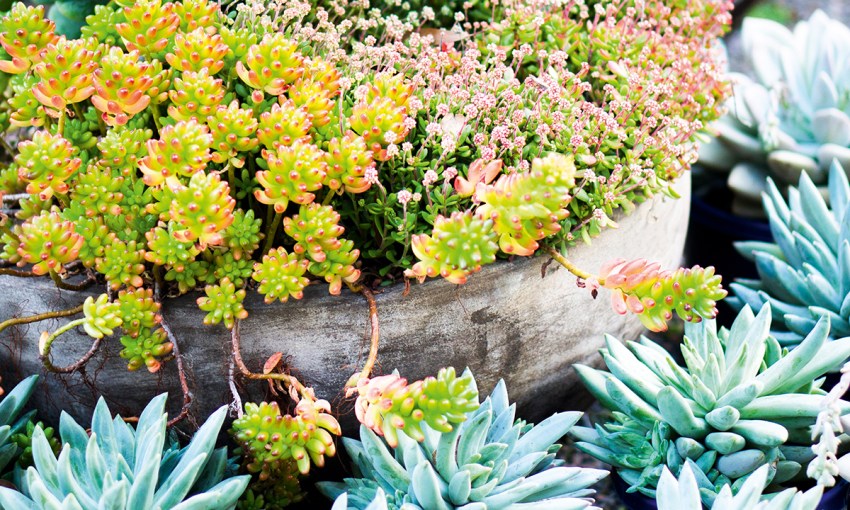With a multitude of different shapes, sizes and colours, succulents offer the gardener a wide range of planting possibilities.
Succulents: Plants for everywhere
There are endless ways that succulents can be used in the garden. This includes beautiful garden beds, eye-catching pot displays, vertical wall gardens, hanging baskets and just about anything that will hold potting mix.
Succulents can be grown in full or partial sun, while some varieties can grow in full shade. They also require little water and can be easily propagated to expand your succulent garden even more.
Succulents are generally put under one heading, but there are many different species with different characteristics.
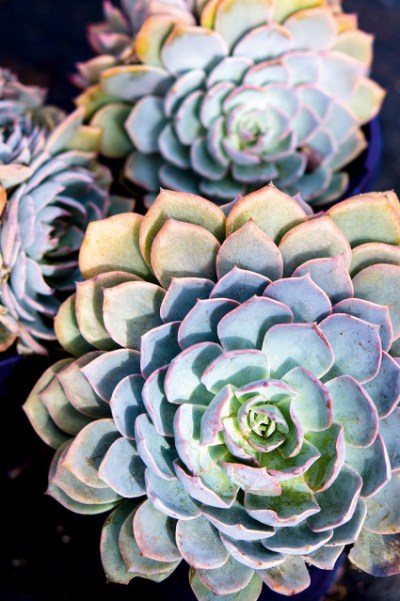
Plants in the species echeveria form compact rosettes, can have brightly coloured leaves and often produce offsets or baby plants around the base of the plant. There are many species and they are very diverse in colour and shape, making them excellent garden and pot specimens.
Sedums come in hundreds of different species. Because of their dormant period, from year-to-year they can die down and then regrow from the ground. Some sedums grow as ground cover, while others grow as small shrubs, all with a good range of colour.
Graptoverias are compact plants with plump, colourful leaves, growing in rosettes that are usually larger than most echeverias.
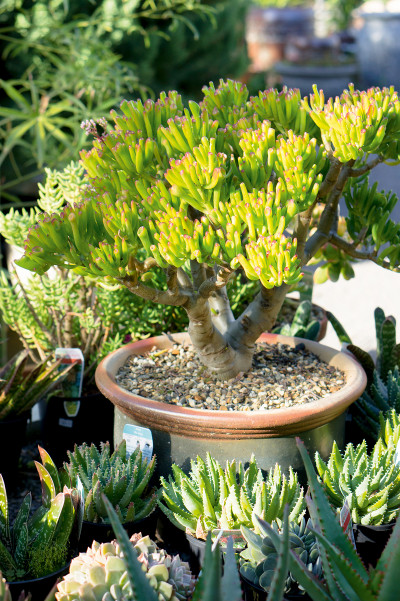
Agaves are a larger form of succulent with large rosettes of strong, fleshy leaves. These plants come in many different colours and hold great structures, making them a special feature plant in the garden.
The aloe species has rosettes of large, thick fleshy leaves. Flowers are tubular and vary in colour, from red to yellow, pink and orange. Many species of aloe appear to be stemless, with the rosette growing directly at ground level.
Other varieties have fleshy leaves springing from the stem. They come in different colours and some can even grow into a small tree. Aloe vera is the most commonly known aloe, used to ease skin conditions and relieve sunburn.
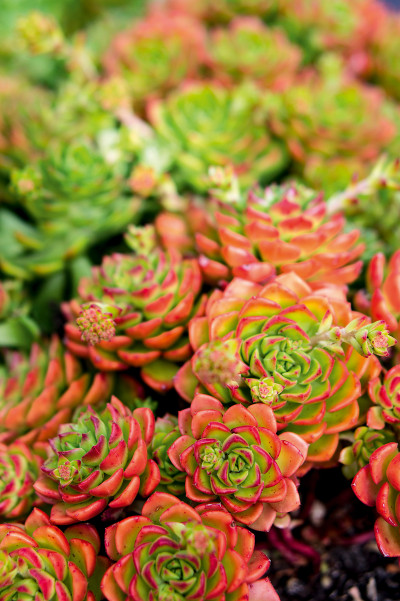
Haworthias are small-growing succulents that form rosettes of firm, fleshy leaves. These little plants are good for planting in terrariums and small pots, as they don’t grow very big and have a greater tolerance to low light.
Howarthia species are often collected by enthusiasts and, for such a small plant, can be sold for a good amount of money by collectors.
Gasterias are another excellent plant for small gardens, pots and terrariums. They have very hard leaves, usually with some type of mottling or striping on them. These plants are best grown in filtered sun to prevent sun damage.
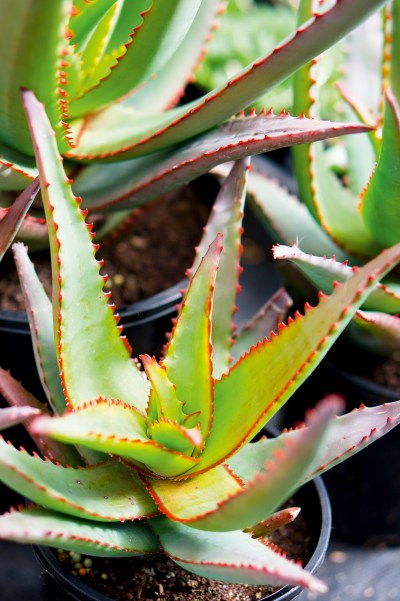
Crassulas are another species. The most common species is called the jade plant and the Chinese money plant. These plants do not grow in rosettes, but are more of a branching plant, ranging from small ground cover types up to large shrubs, which grow to a couple of metres tall.
Other popular succulents are string of pearls, string of hearts and rhipsalis, typically known as mistletoe cacti. These plants make beautiful hanging displays and can be grown indoors or outdoors in filtered light.
This story first appeared in the Spring 2019 issue of SALIFE Gardens and Outdoor Living magazine.



